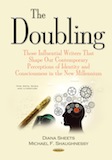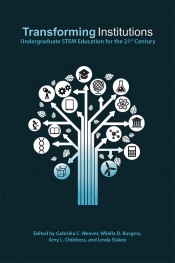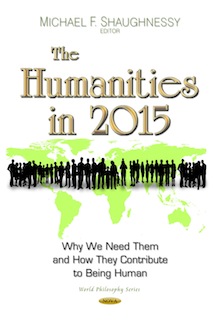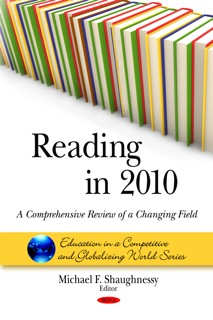The Humanities in Crisis: What Went Wrong and How to Restore Their Centrality in our Daily Lives, Part 3
Part 3 of “The Humanities in Crisis: What Went Wrong and How to Restore Their Centrality in our Daily Lives”. It will be serialized in three parts. It examines the factors underlying the decline of the humanities in liberal arts colleges and universities today.
This essay is available in a collection edited by Michael F. Shaughnessy entitled The Humanities in 2015: Why We Need Them and How They Contribute to Being Human. It was published in 2014 by Nova Science Publishers. A “read only” version of the essay, provided it is intended for noncommercial purposes, may be accessed from my Literary Gulag website by clicking on the book cover image of The Humanities in 2015, http://www.literarygulag.com/, as well as from my Literary Gulag website featured at the University of Illinois IDEALS Open-Access website, https://www.ideals.illinois.edu/handle/2142/54916. All copyright permissions must be obtained from the publisher.
Diana Sheets
English and History Departments, iFoundry Fellow
University of Illinois
DEDICATED TO STEPHEN E. LEVINSON
WHOSE LOVE OF SCIENCE SHAPED HIS APPRECIATION OF THE HUMANITIES
VI Reimagining the Humanities for Undergraduate Education in the Twenty-First Century: A Five Step Plan for Cultural Redemption
Scope: A degree in the humanities should no longer be defined by discipline. Students would be broadly educated in the humanities and social sciences. Ideally this would give them the intellectual foundations not only to understand Western civilization and world cultures but also to develop analytic skills and numerical savvy that would make them sought after by businesses. Students would have both major and minor areas of emphasis. As in the scientific disciplines, courses in the humanities would begin with broadly defined survey courses, followed by advanced upper-level courses, and, finally, capstone courses directed toward research initiatives.
By the time students graduate they would be knowledgeable of European and American history. They would have studied Western development and culture from antiquity and extending through the Middle Ages, the Renaissance, the Scientific Revolution, and the Enlightenment. They would be familiar with the American Revolution and the French Revolution and historical events from the eighteenth century through the twentieth century and into our post-9/11 world.
Training: The educational training of faculty and students would require an understanding of the classics, of philosophy, and of economics and economic history. Students would gain competency with statistics and statistical modeling as it pertains to both scientific and business applications, which creates a formal mathematical approach to structures beset by uncertainty. Undergraduate education would expose them to politics and sociology, as well as the fine arts. They would also develop competency in a foreign language, in addition to a familiarity with global cultures.
Students should be expected to have taken a course in the history of science from antiquity through modernity with a particular emphasis on the impact of science and mathematics and their contributions toward the Scientific Revolution, the Enlightenment, and the Industrial Revolution. They would study the transformation of science during the late nineteenth century and early twentieth century, as well as how science and technology impacted military strategy, music, art, and industry. Students would be exposed to the scientific benefits and moral dilemmas associated with the development of the Manhattan Project, information theory, the computer, and our current understanding of neuroscience. They would then consider how these developments transformed our perceptions of modern identity and our relationship to and interaction with thinking machines.
As the social science disciplines become increasingly mathematized, the humanities must also be receptive to developing connections with the scientific and business communities. Humanities majors would no longer be decadent outsiders who always appear to be having a temper tantrum with the establishment while assuming that society bears the cost for any damage they inflict. Rather, students with humanities degrees would possess valuable skills that are communicative in nature—reading, writing, presentation, as well as an ability to perform sophisticated statistical and demographic modeling of social behavior—essential to living and working in the world.
In other words, a humanities degree would offer a broad spectrum of educational training that would give students expertise in critical thinking about a range of subjects including the liberal arts, the social sciences, business, and the STEM disciplines. What exactly would that achieve? A humanities education would no longer place students outside the pale of business but potentially at its very core. A liberal arts education would confer a value-added component to every business and social interaction.
VII How Would This Be Accomplished?
1. The consolidation of humanistic and social science disciplines—what we generally refer to as departments in academe—would merge into four areas of emphasis. They would include the following: 1. Classics and philosophy, history and politics, as well as some humanistic psychology; 2. English, comparative literature, linguistics and rhetoric, anthropology, and languages; 3. Business, economics, sociology, and statistics; 4. The performing arts—theater, dance, music, art, and architecture. All other disciplines not specified would be selectively merged into one of the appropriate four areas of emphasis, assuming the subject matter would merit inclusion.
2. Identity politics, social justice, and their associated social clubs would be eliminated. Interdisciplinary “studies” programs would be shuttered. Only courses in those areas that have academic merit would be accepted into the appropriate academic disciplines.
3. Core requirements in the humanities would include four year-long courses. The first two would be introductory. The latter two would be upper level, building on previous courses to give students a sophisticated grounding in their respective disciplines while developing their facility in writing and research projects. The subjects covered in these courses would include: 1. Western civilization; 2. Masterpieces of European-American literature and philosophy; 3. Economic, business, and statistical modeling with the appropriate historical foundations; 4. Senior thesis or senior project, which would be the culmination of four years of concentrated emphasis in a given field. Ideally, these core requirements would develop reading, comprehension, writing, presentation, critical thinking, as well as computer and numerical competency. The final research projects would reflect a broad-based humanistic education that would optimize student opportunities for success.
4. Job and Career Placement Centers would be revitalized on campuses. They would work actively with students upon admittance to the humanities programs to direct and guide them in their studies, as well as to help them in identifying internships, awards, and job prospects that would have career potential. These centers would foster networking opportunities for students with faculty, alumnae, corporate sponsors, as well as local, state, and federal organizations and agencies.
5. Administrative Outcome: Tenure would disappear. Unions would be eliminated. Administrative staff would be substantially reduced to reflect the shrinkage in academic disciplines. Contractual agreements would be awarded to faculty based on a sustained commitment to teaching and academic excellence. Faculty would be expected to assist students in developing their academic goals and their pursuit of opportunities in the “real” world. Faculty contracts would be awarded and renewed based on substantive contributions to furthering excellence and identifying opportunities for students. Research would focus on canonical contributions in keeping with the Great Books tradition. Thus, academic scholarship would sustain and build upon the most important ideas and achievements of all time.
VIII Conclusion: How to Restore the Humanities to Our Lives?
We begin by making sure that our students have a substantive grounding in Western civilization. They must have the capability to evaluate and to pass judgment upon societal successes and failures. The criterion would be excellence rather than social justice. Thus, studies would be about evaluating success and failure rather than passing judgment on a litany of hegemonic or colonial excesses. Students would understand why the West was the first to industrialize, why the East lagged behind, and why this mattered.
This is not to say that China didn’t introduce technical innovations including, for instance, the compass, gunpowder, and printing. As Stephen Levinson, who has taught “Scientific Discovery and the Reinvention of Identity” over the years in the Campus Honors Program at the University of Illinois suggests, these technological advancements were not scientific discoveries (Levinson’s course serves as the foundation for his upcoming book on the role Western cultural values played in promoting scientific discovery and path-breaking innovation from antiquity to today.). Tools were developed, techniques and methods were employed, but Judeo-Christian beliefs paved the way for Newton and the Scientific Revolution, the Enlightenment, the Industrial Revolution, as well as twentieth century theories about the universe, notably Quantum Theory and the General Theory of Relativity. Taken together these revolutions and pioneering theories helped to set the stage for the invention of computers, information theory, the Internet, and an appreciation for the specter of the “New, New Thing” (Michael Lewis, The New New Thing: A Silicon Valley Story, W. W. Norton and Company, 1999). These were uniquely Western inventions, although the future offers no guarantee that our civilization will be the scientific innovator in years to come.
Understanding the twenty-first century necessitates acknowledging that the sciences, rather than the humanities, won the culture wars. Perhaps in tacit acknowledgment of this development, by the late 1960s faculty and students in the humanities had abandoned the Western canon and scholarly excellence in favor of political activism. For the liberal arts to once again have a place at the culture table, faculty and students must understand our Western heritage and its contributions spanning antiquity to modernity while acknowledging the contributions of other civilizations and peoples.
It is not enough to understand metapatterns and trends based on methodological principles. We must immerse our minds in the gritty substance of factual analysis, causation, and, yes, success and failure, those painful assessments of where we stand while resurrecting the contributions of great leaders and historic events. This necessitates a fresh look at the contributions of Leopold von Ranke and Wilhelm Dilthey while treating the scholarship of Braudel and his disciple Bod as highly suspect. Let’s be clear: Contemporary scholarship, including that of Braudel and Bod, is subversive. It lays waste to the most important contributions of Western civilization: its great ideas, great leaders, great literature, and, yes, great history.
We need to hit the “reset button” and erase 50 years of cultural destruction. Let’s empower our students with concrete knowledge, as well as methodological approaches that “reboot” the entire cultural enterprise to ensure genuine critical thinking rather than political correctness and pseudo virtue that masquerades as scholarly inquiry today (Diana Sheets, “Reading and Thinking Critically in the Age of Disputation”, Critical Thinking and Higher Order Thinking: A Current Perspective, Editor, Michael F. Shaughnessy, Nova Science Publishers, Inc., 2012; Diana E. Sheets, “The Crisis in the Humanities: Why Today’s Educational and Cultural Experts Can’t and Won’t Resolve the Failings of the Liberal Arts”, The Huffington Post, http://www.huffingtonpost.com/dr-diana-e-sheets/the-crisis-in-the-humanit_b_3588171.html; Michael Shaughnessy, “An Interview with Diana Sheets: The Crisis in the Humanities: Why Today’s Educational and Cultural Experts Can’t and Won’t Resolve the Failings of the Liberal Arts, Education News, http://www.educationviews.org/an-interview-with-diana-sheets-the-crisis-in-the-humanities-why-todays-educational-and-cultural-experts-cant-and-wont-resolve-the-failings-of-the-liberal-arts/).
This is how we will reinvigorate the humanities. We will insist that higher education is demanding and comprehensive. Students will gain facility in the methods and approaches of the social sciences and business. The renewed emphasis on educational excellence will ultimately ensure that the humanities are again seated at the culture table with the engineering and mathematical sciences. This quest for enlightenment will be motivated by more than self-interest and self-preservation as students in the liberal arts, social sciences, business, and scientific community come to understand that the humanities offer a gateway to the magisterial kingdom of wisdom and a terrestrial pathway to navigate successfully in our globalized community.
REFERENCES
Addressing a decline in humanities enrollment”. [Electronic version]. Harvard Magazine. (2013, June 6). Retrieved April 2, 2014, http://harvardmagazine.com/2013/06/reinvigorating-the-humanities.
Barzun, J. (2000). From dawn to decadence: 500 years of western cultural life. New York: HarperCollins Publishers Inc.
Bloom, A. (1987). The closing of the american mind: How higher education has failed democracy and impoverished the souls of today’s students. New York: Simon and Schuster.
Bod, R. (2013). A new history of the humanities: The search for principles and patterns from antiquity to the present. Oxford: Oxford University Press.
Bod, R., Maat, J., & Weststeijn, T. (Eds.). (2010). The making of the humanities, Vol. 1, Early modern europe. Amsterdam: Amsterdam University Press. Based on the 2008 First International Conference on the History of the Humanities.
Bod, R., Maat, J., & Weststeijn, T. (Eds.). (2012). The making of the humanities, Vol. 2, From early modern to modern disciplines. Amsterdam: Amsterdam University Press. Based on the 2010 conference from which papers were selected for publication.
Braudel, F. (2000). The mediterranean and the mediterranean world in the age of philip II, Vols. 1-3. London: The Folio Society. (Original work published 1949).
Brooks, D. (2013, June 20). The humanist vocation. [Electronic version]. The New York Times.Retrieved February 21, 2014, http://www.nytimes.com/2013/06/21/opinion/brooks-the-humanist-vocation.html.
Callahan, R. (2006, April 2). Review of In command of history: Churchill fighting and writing the second world war. The Journal of Military History, Vol. 70, No. 2, 551-552. [Electronic Version]. Retrieved February 21, 2014, http://muse.jhu.edu/journals/jmh/summary/v070/70.2callahan.html.
Cohan, P. (2012, May 29). To boost post-college prospects, cut humanities departments. [Electronic version]. Forbes Magazine. Retrieved February 21, 2014, http://www.forbes.com/sites/petercohan/2012/05/29/to-boost-post-college-prospects-cut-humanities-departments/.
Critchley, S. (2001). Continental philosophy: A very short introduction. Oxford: Oxford University Press.
Define social science. The Free Dictionary by Farlex (n.d.). [Electronic version]. Retrieved February 21, 2014, http://www.thefreedictionary.com/social+science. The Free Dictionary definition is taken from The American Heritage Diction of the English Language, Fourth Edition, copyright © 2000 & updated in 2009. Published by Houghton Mifflin Company.
Defining the humanities—a work in progress. (2001, October 20 & update 2009, December 14). [Electronic version]. Compiled by the Humanities Council of Washington, D.C. Retrieved February 23, 2014, http://www.wdchumanities.org/docs/defininghumanities.pdf.
Feingold, M. (2004). The newtonian moment: Isaac newton and the making of modern culture. New York: The New York Public Library.
Fish, S. (2010, November 8). The woe-is-us books. [Electronic version]. The New York Times. Retrieved February 23, 2014, http://opinionator.blogs.nytimes.com/2010/11/08/the-woe-is-us-books/?_php=true&_type=blogs&_r=0.
Hacker, A. & Dreifus, C. (2010). Higher education?: How colleges are wasting our money and failing our kids—and what we can do about it. New York: Times Books.
Horowitz, D. (2010). Reforming our universities: The campaign for an academic bill of rights. Washington D. C.: Regnery Publishing.
Hutner, G. & Mohamed, F. G. (2013, September 6). Humanities deathwatch: The real humanities crisis is happening at public universities. [Electronic version]. The New Republic. Retrieved February 23, 2014, http://www.newrepublic.com/article/114616/public-universities-hurt-humanities-crisis. This article, written by the conference organizers, sets the stage for the conference “A New Deal for the Humanities”, which was held at the University of Illinois on September 18, 2013.
In brief: the teaching of the arts and humanities at harvard college: Mapping the future. (2013). [Electronic Version]. Harvard University. Retrieved February 21, 2014, http://tinyurl.com/od668d3.
Ireland, C. (2013, May 2). Oh, the humanities! Big trouble, but still some hope, in technocratic world, panelists say. [Electonic version]. Harvard Gazette. Retrieved February 21, 2014, http://news.harvard.edu/gazette/story/2013/05/oh-the-humanities/.
Kernan, A. B. (Ed.). (1997). What’s happened to the humanities? Princeton: Princeton University Press.
Kimball, R. (2008). Tenured radicals: How politics has corrupted our higher education (3rd ed.). Chicago: Ivan R. Dee.
Kuhn, T. S. (2012). The structure of scientific revolutions (4th ed.). Chicago: University of Chicago Press. (Original work published 1962).
Levitz, J. & Belkin, D. (2013, June 6). Humanities fall from favor: Far fewer harvard students express interest in field with weak job prospects. [Electronic version]. The Wall Street Journal. Retrieved February 21, 2014,http://tinyurl.com/q8oukxp.
Lewin, T. (2013, October 30). As interest fades in the humanities, colleges worry. [Electronic version]. The New York Times. Retrieved February 21, 2014, http://www.nytimes.com/2013/10/31/education/as-interest-fades-in-the-humanities-colleges-worry.html?_r=0.
Lewis, M. (1999). The new new thing: A silicon valley story. New York: W. W. Norton and Company.
Lovejoy, A. O. (1936). The great chain of being: A study of the history of an idea. Cambridge: Harvard University Press.
Mansfield, H. (Spring 2013). The higher education scandal. Claremont Review of Books. [Electronic version now available from Real Clear Politics]. Retrieved February 21, 2013,http://tinyurl.com/zg2s9sw).
Menand, L. (2010). The marketplace of ideas: Reform and resistance in the american university. New York: W. W. Norton & Company.
Mortenson, T. G. (Winter 2012). State funding: A race to the bottom. [Electronic version]. American Council on Education. Retrieved February 21, 2014, http://www.acenet.edu/the-presidency/columns-and-features/Pages/state-funding-a-race-to-the-bottom.aspx.
Parry, J. (1985). The brahmanical tradition and the technology of the intellect. In J. Overing (Ed.), Reason and morality (pp. 200-223). London: Tavistock Publications.
Patai, D. and Corral, W. H. (Eds.). (2005). Theory’s empire: An anthology of dissent. New York: Columbia University Press.
Rieff, P. (2006). My life among the deathworks: Illustrations of the aesthetics of authority. Charlottesville: University of Virginia Press.
Rising above the gathering storm: Energizing and employing america for a brighter economic future(2007). National Research Council. Washington, D.C.: The National Academies Press. [Electronic version available for download]. Retrieved February 21, 2014, http://www.nap.edu/catalog.php?record_id=11463.
Shaughnessy, M. (2013, July 19). An interview with diana sheets: The crisis in the humanities: why today’s educational and cultural experts can’t and won’t resolve the failings of the liberal arts. [Electronic version]. Education News. Retrieved February 23, 2014, http://www.educationviews.org/an-interview-with-diana-sheets-the-crisis-in-the-humanities-why-todays-educational-and-cultural-experts-cant-and-wont-resolve-the-failings-of-the-liberal-arts/.
Sheets, D. (2008, January 8). Looking for real virtue in literature: Fiction should reject solipsistic preoccupations and examine the world at large. [Electronic version]. The Christian Science Monitor. Retrieved February 23, 2014, http://www.csmonitor.com/Commentary/Opinion/2008/0109/p09s02-coop.html.
Sheets, D. (2012). Reading and thinking critically in the age of disputation. In M. F. Shaughnessy (Ed.). Critical thinking and higher order thinking: A current perspective (pp. 99-116). Psychology Research Progress. New York: Nova Science Publishers, Inc. [Electronic version available by clicking on the book cover Critical Thinking and Higher Order Thinking on my Literary Gulag website]. Retrieved February 21, 2014, http://www.literarygulag.com/.
Sheets, D. (2010). The great books and cultural identity: The rise and fall of western memory and its implications for our times. In M. F. Shaughnessy (Ed.). Reading in 2010: a comprehensive review of a changing field (pp. 155-174). Education in a competitive and globalizing world series. New York: Nova Science Publishers, Inc. [Electronic version available by clicking on the book cover Reading in 2010 on my Literary Gulag website]. Retrieved February 21, 2014, http://www.literarygulag.com/.
Sheets, D. E. (2013, July 15). The crisis in the humanities: Why today’s educational and cultural experts can’t and won’t resolve the failings of the liberal arts. [Electronic version]. Huffington Post. Retrieved February 23, 2014, http://www.huffingtonpost.com/dr-diana-e-sheets/the-crisis-in-the-humanit_b_3588171.html.
Sheets, D. E. (2007, December 13). Virtue. University of Illinois open-access, IDEALS, https://www.ideals.illinois.edu/handle/2142/3469 and available on my Literary Gulag website (2007, December 12), http://www.literarygulag.com/blog/show/11.
Snow, C. P. (1990). Two cultures. Leonardo On-Line, Vol. 23, No. 2/3. New Foundations: Classroom Lessons in Art/Science/Technology for the 1990s, pp. 169-173. The MIT Press. [Electronic version]. Retrieved February 21, 2014, http://wsblog.iash.unibe.ch/wp-content/uploads/Snow.pdf. (Original work published 1959).
Taylor, M. C. (2010). Crisis on campus: A bold plan for reforming our colleges and universities. New York: Alfred A. Knopf.
The heart of the matter: The humanities and social sciences for a vibrant, competitive, and secure nation. (2013). [Electronic version]. American Academy of Arts & Sciences. Retrieved February 21, 2014, http://www.humanitiescommission.org/_pdf/hss_report.pdf.
The teaching of the arts and humanities at harvard college: Mapping the future. (2013). [Electronic Version]. Harvard University. Retrieved February 21, 2014,http://tinyurl.com/mnacfqw.
Trilling, L. (1962, June). Science, literature and culture: A comment on the leavis-snow controversy. Commentary Magazine, Vol. 33, No. 6, 461-477.
Waugh, P. (December, 2009). Review of“The two cultures controversy: Science, literature and cultural politics in postwar britain”. Reviews in History, No. 849. Retrieved February 22, 2014, http://www.history.ac.uk/reviews/review/849.
White, H. (1973). Metahistory: The historical imagination in nineteenth-century europe. Baltimore: The John Hopkins University Press.
Wood, P. & Toscano, M. (2013, April 3). What does bowdoin teach?: How a contemporary liberal arts college shapes students. National Association of Scholars. [Electronic version]. Retrieved February 21, 2014, http://www.nas.org/images/documents/What_Does_Bowdoin_Teach.pdf.









